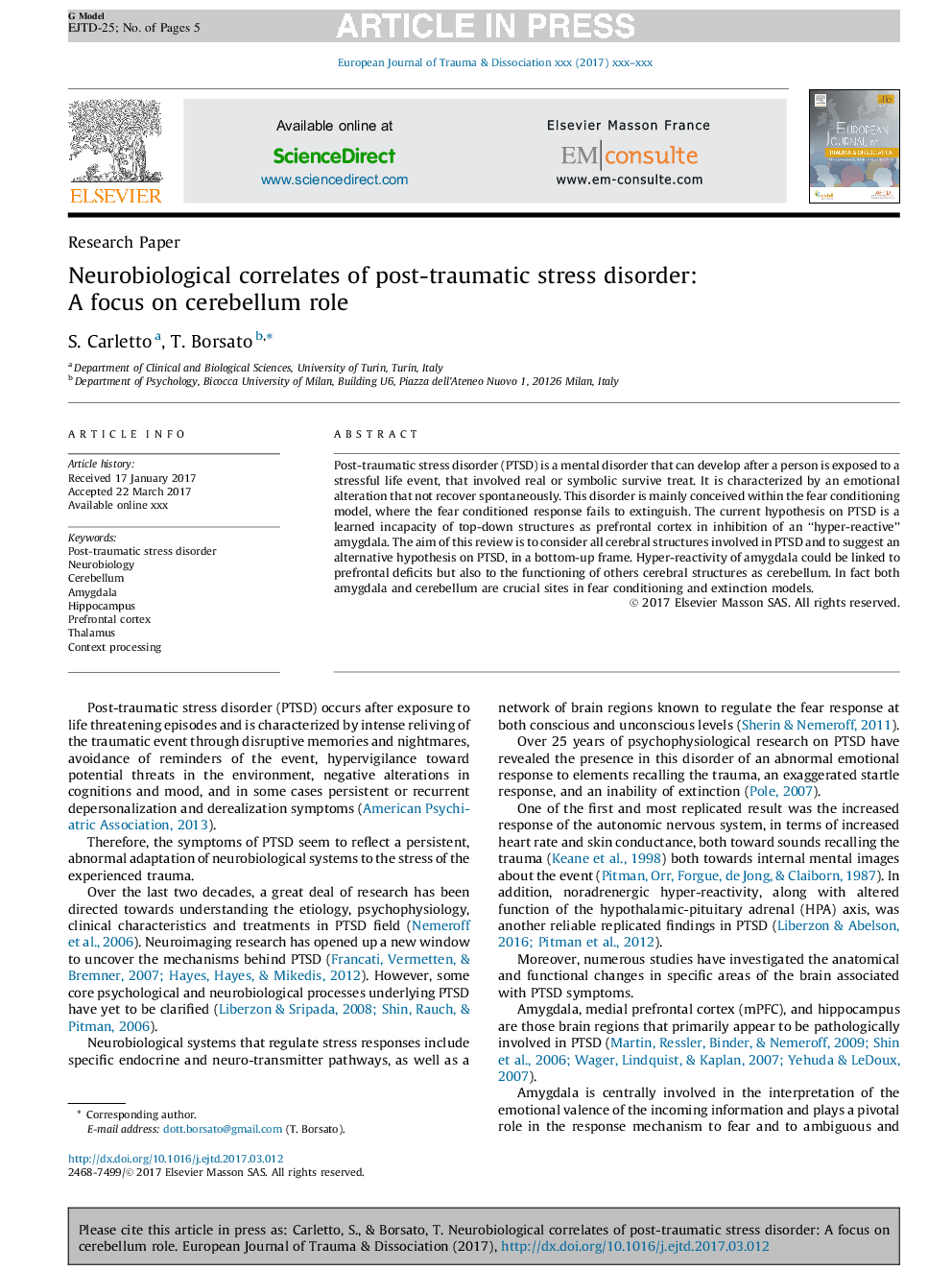ترجمه فارسی عنوان مقاله
ارتباطات عصبی بین اختلالات استرس پس از سانحه: تمرکز بر نقش مخچه
عنوان انگلیسی
Neurobiological correlates of post-traumatic stress disorder: A focus on cerebellum role
| کد مقاله | سال انتشار | تعداد صفحات مقاله انگلیسی |
|---|---|---|
| 126970 | 2017 | 5 صفحه PDF |
منبع

Publisher : Elsevier - Science Direct (الزویر - ساینس دایرکت)
Journal : European Journal of Trauma & Dissociation, Volume 1, Issue 3, September 2017, Pages 153-157

